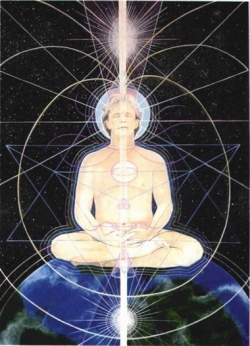Vimokkha
'liberation' (deliverance). I. the 3; II. the 8.
I. The 3 liberations are:
- 1. the conditionless (or signless) liberation (animitta-v.),
- 2. the desireless liberation (apanihita-v.),
- 3. the emptiness (or void) liberation (suññatā-v. ).
They are also called 'the triple gateway to liberation' (vimokkha-mukha; Vis.M. XXI, 66ff), as they are three different approaches to the paths of holiness. - See visuddhi VI, 8. Cf. Vis XXI, 6ff, 121ff; Pts.M. II. Vimokkha-Kathā.
- 1. "Whosoever being filled with determination (adhimokkha, q.v.), considers all formations as impermanent (anicca), such a one attains the conditionless liberation.
- 2. Whosoever being filled with tranquillity, considers all formations as painful (dukkha), such a one attains the desireless liberation.
- 3. Whosoever being filled with wisdom, considers all formations as without a self (anattā), such a one attains the emptiness liberation" (Vis.M. XXI, 70 = Pts.M. II, p. 58).
(1) and (2) are mentioned and explained in M. 43, under the name of deliverances of mind (ceto-vimutti, q.v.). - (2) and (3) appear in Dhs. (344ff, 353ff) in the section on supermundane consciousness (see Atthasālini Tr., p. 299ff).
II. The 8 liberations (attha vimokkha) occur frequently in the texts (A. VIII, 66; D. 16, etc.) and are described as follows:
"There are 8 liberations, o monks. Which are these?
- (1) Whilst remaining in the fine-material sphere (rūpī), one perceives corporeal forms: this is the first liberation.
- (2) "Not perceiving corporcal forms on one's own person, one perceives corporcal forms externally: this is the 2nd liberation.
- (3) By thinking of the beautiful, one is filled with confidence: this is the 3rd liberation.
- (4) "Through the total ovcrcoming of the corporeality-perceptions, the vanishing of the reflex-perceptions, and the non-attention to the multiformity-perceptions, with the idea 'Unbounded is space', one reaches the sphere of unbounded space (ākāsānañcāyatana) and abides therein: this is the 4th liberation.
- (5) "Through the total ovcrcoming of the sphere of unbounded space, and with the idea 'Unbounded is consciousness', one reaches the sphere of unbounded consciousness (viññānañcāyatana) and abides therein: this is the 5th liberation.
- (6) "Through the total overcoming of the sphere of unbounded consciousness, and with the idea 'Nothing is there', one reaches the sphere of nothingness (ākiñeaññāyatana) and abides therein: this is the 6th liberation.
- (7) "Through the total overcoming of the sphere of nothingness, one reaches the sphere of neither-perception-nor-non-perception (n'eva-saññā-nāsaññāyatana) and abides therein: this is the 7th liberation .
- (8) "Through the total overcoming of the sphere of neither-perception-nor-non-perception, one reaches the extinction of perception and feeling (s. nirodha-samāpatti): this is the 8th liberation.
These, o monks, are the 8 kinds of liberation."
For (1-3), s. abhibhāyatana; for (4-7), s. jhāna; for (8), s. nirodha-samāpatti.
By (3) is meant the attainment of the fine-material absorptions (jhāna, q.v.) by means of concentrating the mind on perfectly pure and bright colours as objects of the kasina (q.v.). According to Pts.M. this mental state is produced also by concentrating the mind on the 4 sublime states, i.e. all-embracing kindness, compassion, sympathetic joy and equanimity, in consequence of which allbeings appear perfectly pure and glorified, and thus the mind turns to the beautiful.
See Pts.M. II, Vimokkha-kathā; Atthasālini Tr., p. 255; App.
